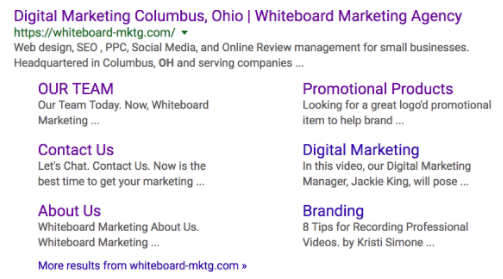In the real estate world, we hear that the key to success is location, location location. In the SEO and website design world, the key to success is content, content, content.
And, not just content, but original content.
When writing content for your website, it can sometimes be difficult to balance the flow of the copy so it is understood by your customers with the key components that will be indexed by Google. As website designers and copywriters, we walk this carefully balanced line each and every day.
We have outlined three goals to keep in mind when you are writing content for your website:
- Write content they way you want Google to see and index it for search.
- Write content they way your customers are searching.
- Write content the way your customers will understand and that will motivate them to “act”.
The single most important factor to accomplish all three goals above is to write original content. If you write original content, search engines will help your site get more exposure. Google has made it clear that it does not like and will “filter” sites with duplicate content. Google will reward high-quality sites that contain original content. Great content not only engages clients, it also improves your site’s ranking.
Write content they way you want Google to see and index it for search.
Almost every single word on your page is seen and indexed by Google. Google is not limited in how many pages of your website it will crawl, index, and return. It reaches everything. Not only does Google look at almost all your content, but the Googlebots “pick-up” or know whenever you publish new content.
The only content Google does not look at is the sections of your website that are blocked by robots.txt. These sections could include pages, files, directories that your website has “disallowed” and asked Google not to index them. Utilizing this strategy is commonplace in the website design and SEO world, but make sure you are allowing the pages of your website you want Google to see and index.
Create title tags that reflect the actual page and keywords.
Your website page title tag has been called “the single most important on-page SEO element,” and “the most important on-page SEO factor.”
Write a page description that reflects the keywords you want to show up for in search. Google searches your images by the way you name them.
Name every image you add to your website. Google is looking at the alt tags on images since it can’t actually look at the picture itself.
Write content the way your customers are searching.
When we write content for a website, we tend to write content the way we want to appear to our customers. A great example of this is how dentists explain a dental “cleaning.” Dentists typically don’t like the word “cleanings.” They like to use the words hygiene, hygiene appointment, and even prophylaxis.
While dentists may want to use more technical terms, patients are not searching that way. So, it is important to write copy that includes the actual keywords a customer or patient is actually searching for. A compromise may look something like this on a Dental Exam + Cleanings web page:
“At (insert your practice name here), we recommend our patients visit our office every six months for a dental exam and cleaning. Also called hygiene appointments or prophylaxis, these regular visits can…”
It can be difficult to know which keywords a customer or patient is searching for. One of our favorite resources is AnswerThePublic. Or, just start typing keywords into a Google browser and wait for the “drop-down” menu to pop up. Google’s drop-down menu is filled with the most common keywords people are searching for at the time.
Write content the way your customers will understand and that will motivate them to “act.”
- Write strong page titles that will interest the patient. Think about how you read articles online or in print. You read the headline first. If it catches your eye, you may read more of the article. The same psychology is applied to your website content.
- Put your conclusions at the beginning of your page content and work backward from there. This puts your most important information front and center.
- Don’t bunch up your copy. Bold lines, use bullets, boxes to call out key points of information.
- Write content that is unique to your company, your voice and how your philosophy makes you different. And, don’t say, “we are different.” Explain how you are different. Communicate it through the tone of your content.
- Check your spelling and grammar.
- Review your procedures or services and add your specific processes.
- Make your content actionable. The best content gives the user a sense of how to apply the information. How does this apply to me as a customer/patient/client?
- Provide answers to customers’ most common questions. People are searching because they want an answer to something.
- Provide sources if you get content from others (attribute and link).
After you have worked hard to write content for Google and your customers, the evolution is to create content that can be searched by voice search. Stay tuned to our Whiteboard Marketing blog for insight on how voice search is the next wave of consumer search, website design and website optimization.


